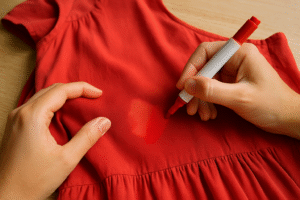Foam shoe soles are popular for their lightweight comfort and durability, making them a top choice for sneakers, sandals, and other types of footwear. However, one common problem that many shoe owners encounter is bitemarks on the foam. Whether caused by pets or accidents, these bitemarks can negatively affect the look and feel of your shoes. Fortunately, learning how to fix bitemarks on foam shoe sole is easier than it seems, and with the right tools and techniques, you can restore your shoes to their original condition.
In this guide, we’ll walk you through a step-by-step process to effectively fix bitemarks on foam shoe sole. Not only will we help you remove the visible damage, but we’ll also offer advice on preventing future issues. Whether you’re dealing with minor indentations or deeper punctures, there are various methods to restore your foam soles and make them as good as new.
The goal is to help you learn how to fix bitemarks on foam shoe sole in a way that’s both cost-effective and practical. You don’t need to rush to a shoe repair shop or replace your entire pair of shoes. With just a few tools, you’ll be able to restore the look and function of your foam shoes. Let’s dive into the process and explore the best ways to fix bitemarks on foam shoe sole.
Identify the Type and Severity of the Bitemarks
Before you can effectively fix bitemarks on foam shoe sole, it’s essential to assess the type and severity of the damage. Not all bitemarks are the same, and the method of repair will vary depending on whether the damage is shallow or deep. A minor indentation from a pet’s bite can be less challenging to fix than a more severe puncture caused by a sharp object.
Inspect the area closely to determine the extent of the damage. Light bitemarks may require only a bit of smoothing, while deep cuts may need a more thorough repair. Once you understand the severity of the damage, you can proceed with the appropriate techniques to fix bitemarks on foam shoe sole.
Cleaning the Area Around the Bitemark
Before you can begin repairing the bitemark, it’s important to clean the area around it. Any dirt or debris could interfere with the repair process. Use a mild detergent and warm water to gently scrub the area. Once cleaned, dry the area thoroughly with a soft cloth. By preparing the surface properly, you’ll ensure that the repair materials bond effectively when you fix bitemarks on foam shoe sole.
Cleaning the shoe also allows you to get a better look at the bitemarks and evaluate how much material needs to be removed to ensure a smooth, seamless repair.
Use of Foam Repair Products
To fix bitemarks on foam shoe sole, the use of a foam-specific repair product is essential. These products are designed to restore foam surfaces to their original shape and appearance. Foam repair compounds come in various forms, such as paste or spray, and are ideal for filling in small gaps or indentations caused by bites.
When applying a foam repair product, ensure that the bitemark is completely covered. Smooth the compound over the damaged area to level out the surface. Once you’ve applied the foam repair product, follow the manufacturer’s instructions on drying times and curing processes. This step is crucial to ensure that the product effectively fills in the bitemark, leaving the sole looking as good as new.
Sanding the Area for a Smooth Finish
After the foam repair product has dried, you may notice that the surface is slightly uneven. To achieve a smooth, seamless finish, lightly sand the repaired area. Use fine-grit sandpaper to gently smooth the surface and blend the repaired spot with the rest of the sole.
Sanding allows you to fix bitemarks on foam shoe sole by removing excess repair material and creating a polished surface. Be careful not to sand too aggressively, as this could damage the surrounding foam. A gentle touch is key to ensuring that the repair looks natural.
Painting the Repaired Area
For those looking to restore the appearance of their foam shoe sole fully, painting is an excellent option. After sanding, you can apply a coat of paint to match the original color of the foam. This is particularly useful if the bitemarks are quite visible and the repair product alters the appearance of the sole.
When selecting paint, make sure it’s suitable for use on foam materials. Foam-specific paints or flexible acrylic paints work best. Apply a thin, even coat of paint to the repaired area and allow it to dry. This step will help you fix bitemarks on foam shoe sole and restore your shoe’s original look.
Using Heat to Reshape Foam
If the bitemarks have caused the foam to lose its shape, using heat can help restore it. Heat reshapes foam by softening the material, allowing it to return to its original form. To do this, use a heat gun or a blow dryer on a low setting.
Hold the heat source several inches away from the damaged area and gently heat the foam. Be careful not to overheat the foam, as this could cause more damage. Once the foam has softened, use a tool or your fingers to gently reshape it to its original form. Heat reshaping can be an effective way to fix bitemarks on foam shoe sole, especially when the foam has been compressed or distorted.
Reinforcing with Fabric or Mesh
For more severe bitemarks, you may need to reinforce the foam with fabric or mesh. This is particularly useful if the bite has caused a deep tear or puncture. A piece of fabric or mesh can be applied over the bitemark to provide additional structure and prevent further damage.
To apply this method, first, clean the damaged area and apply the foam repair product as mentioned earlier. Then, cut a piece of fabric or mesh to fit over the repair site. Once the fabric is in place, apply more foam repair compound to cover it completely. This added reinforcement helps to fix bitemarks on foam shoe sole and ensures that the repair holds up over time.
Preventing Future Bitemarks on Foam Shoe Soles
Now that you know how to fix bitemarks on foam shoe sole, it’s important to prevent future damage. The best way to do this is to keep your shoes away from pets or other potential hazards that may cause biting or chewing. If you have pets, consider keeping your shoes in a safe place or using protective covers to shield the soles from damage.
Regularly inspect your foam soles for any signs of wear and tear. Early detection of minor bitemarks or damage allows you to fix the issue before it becomes a larger problem. Preventing future bitemarks will help keep your shoes in great condition and reduce the need for frequent repairs.
When to Seek Professional Repair
While many bitemarks on foam shoe soles can be fixed at home, there are instances where professional repair may be necessary. If the damage is extensive or if you’re unsure about how to proceed, it’s a good idea to take your shoes to a professional shoe repair specialist. They have the experience and tools to effectively fix bitemarks on foam shoe sole and can ensure that your shoes are restored to their best condition.
Conclusion: Fix Bitemarks on Foam Shoe Sole for Long-Lasting Comfort
Knowing how to fix bitemarks on foam shoe sole can save you both time and money. With the right tools and techniques, you can restore the look and function of your foam shoes, making them last longer and keeping them comfortable to wear. From cleaning and repairing the damaged area to reshaping and painting the foam, there are several ways to tackle the problem effectively.
Remember to prevent future bitemarks by keeping your shoes in safe places and maintaining them regularly. With the knowledge shared in this guide, you’ll be able to easily fix bitemarks on foam shoe sole and enjoy your footwear for years to come. Whether you’re dealing with small indentations or deeper cuts, a few simple steps will have your shoes looking and feeling as good as new.

Share this:
- Click to share on Facebook (Opens in new window) Facebook
- Click to share on X (Opens in new window) X
- Click to share on LinkedIn (Opens in new window) LinkedIn
- Click to share on Reddit (Opens in new window) Reddit
- Click to share on X (Opens in new window) X
- Click to share on Threads (Opens in new window) Threads
- Click to share on WhatsApp (Opens in new window) WhatsApp




